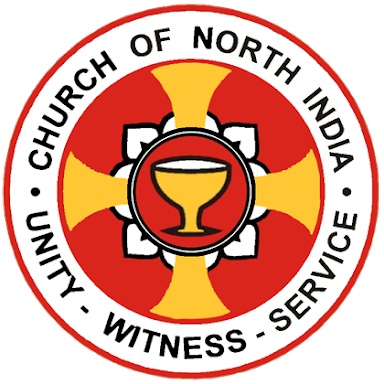
The Circle in which the whole badge is enclosed is a symbol of eternity, for it is without beginning and without end. Christians are always to line against the background of eternity. They are among those who believe and remember that behind the ebb and flow of things temporal, there stand the eternal verities.
Dominating the whole design is the Cross, the universally accepted badge of the Christian, reminding us of our Saviour, from whom we take our name. It stands for self giving and self-sacrifice, for patient endurance of suffering accepted for the sake of others; and because it was the son of God who thus suffered and died for us, it is a golden cross, gold being the colour for godhead. Gold also suggests victory, reminding us that the Cross of Christ is the symbol of triumph, not of defeat.
The cross is set against a background of Red, the colour of blood; and this again is a symbol of sacrifice and self-giving in the service of others. Red is also in liturgical usage the colour which stands for the Holy Spirit to whom we must still look for guidance. It is in the strength of the Holy Spirit, and only in his strength, that the Church and the individual Christian can hope to obey and serve God.
Behind the cross there is a Lotus, dear to the heart of every Indian, the symbol of the spiritual quest of India, which we believe find its final satisfaction only in the cross, and in him who died on it.The lotus is also the symbol of purity rising in all its own pure beauty out of mud beneath the water. This challenge of Purity is reinforced by the use of White for the flower and for the circle imposed upon it, “Blessed are the pure in heart, for they shall see God.” Within this inner circle of white there is set a chalice, as used in the Lord’s Supper. Therein we receive sacramentally the atoning and redeeming blood of Christ, and so it is appropriately set against a background of red. But the chalice itself is Gold, for the sacrament is God’s gift of his own life.

The Chalice is set at the very center of the whole badge, to teach us that worship and sacrament are at the center of Christian living. God must be the center of our lives. The first and great commandment is to love God; and that love, coming from a creature to his Creator, must find expression in worship. But there is a second commandment: “Thou shall love thy neighbor as thyself.” Therefore, lest our very worship should become selfish and self-centered, we are continually to go out from the worship at the heart of our lives into the world, and use the grace we have received in the service of our fellowmen.
Last, but not least, as we move out from the center, we come back to the outer circle, and there we are given the three key words Unity, Witness, Service. The Church of North India is to seek and work and pray for the unity of all who bear the name of Christ. At the same time she has to use the unity which God has given her in order that she may more faithfully and more effectively bear witness to her faith, and may give herself to the service of all without distinction, after the example of her Servant Lord.
The Logo: A great deal of time, skill and devotion has gone into the design of the badge of the Church of North India. We must be extremely grateful to Frank Wesley, a well-known artist, who gave us this splendid badge. What a wealth of meaning and teaching it has for us!